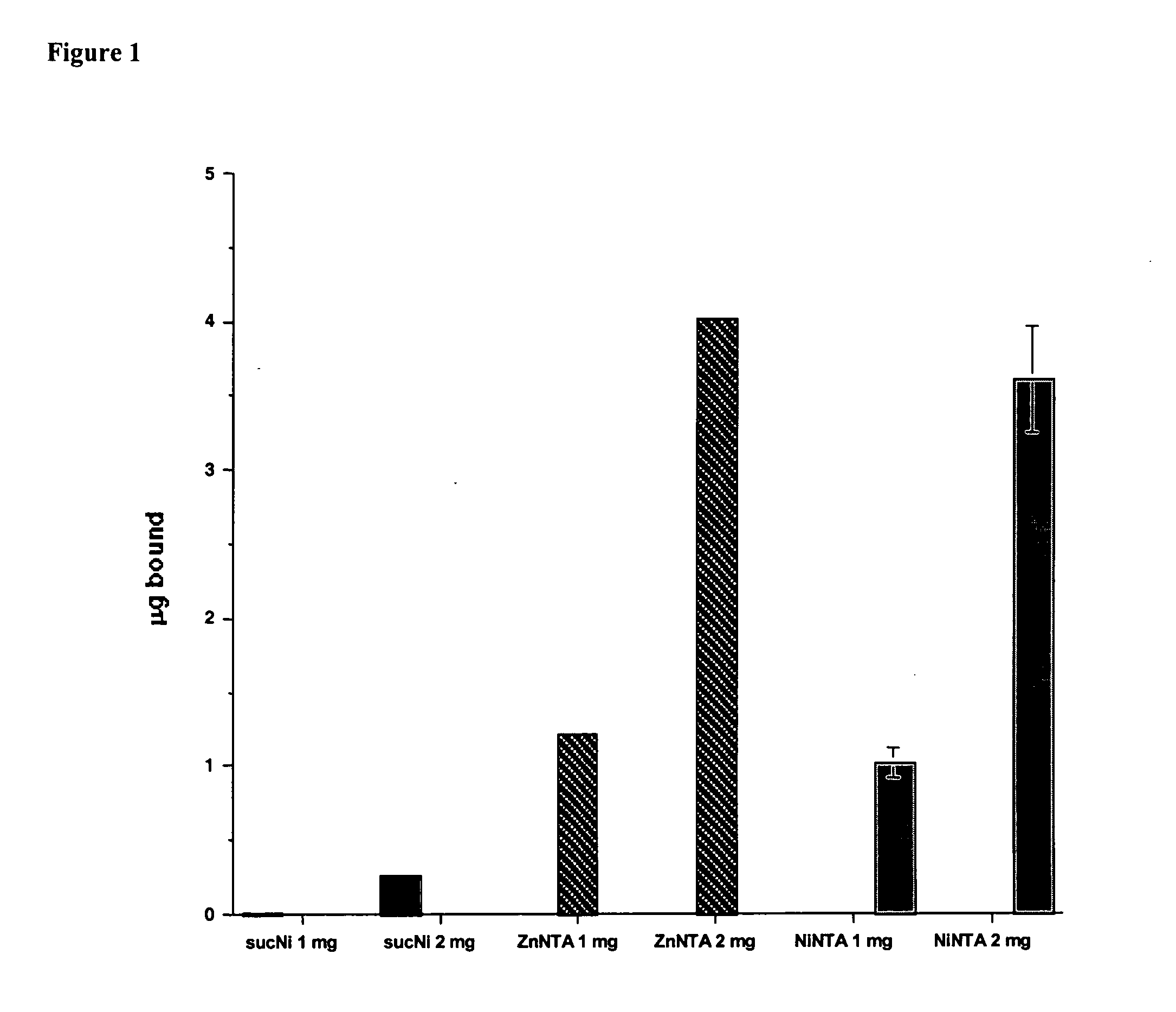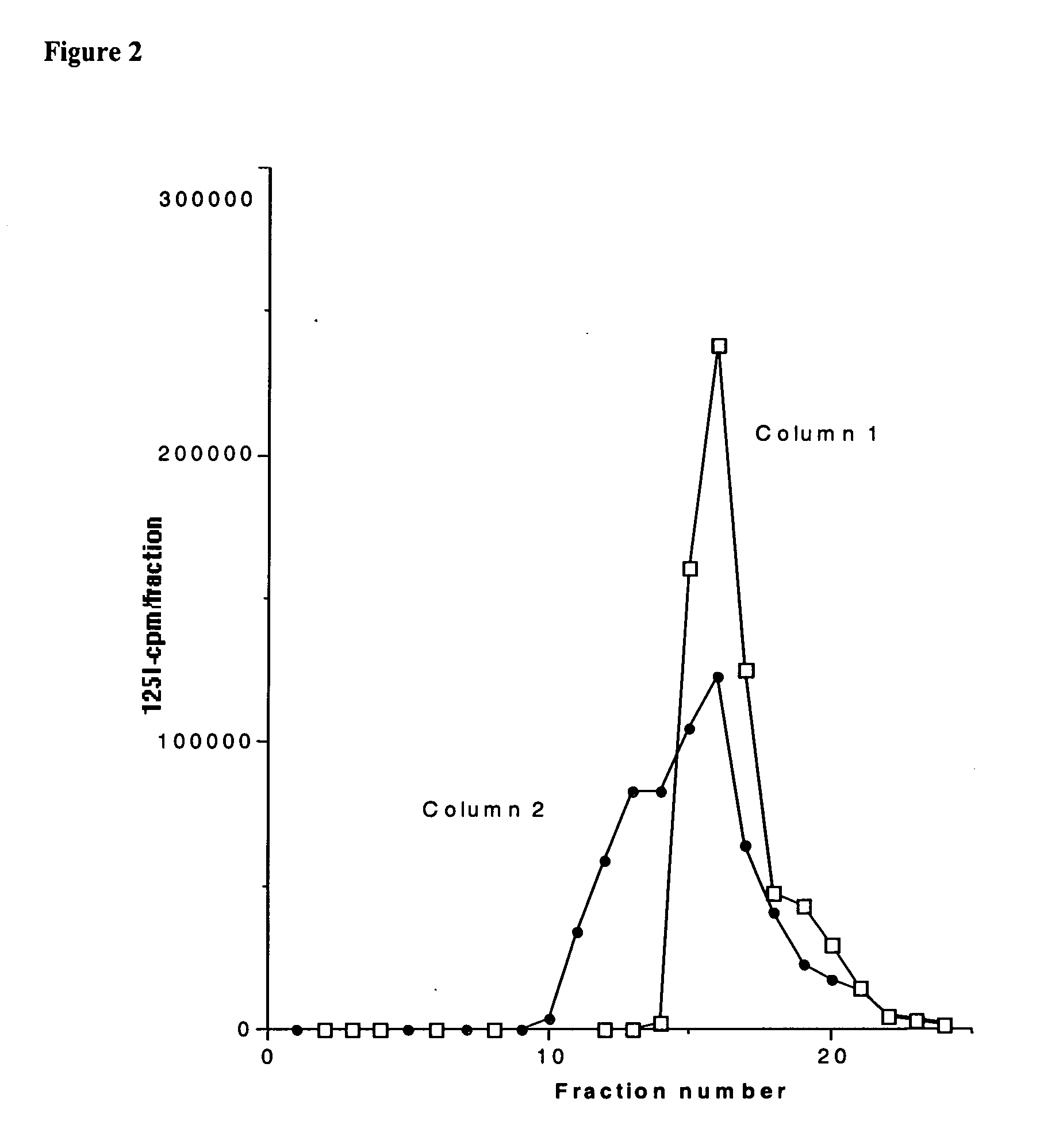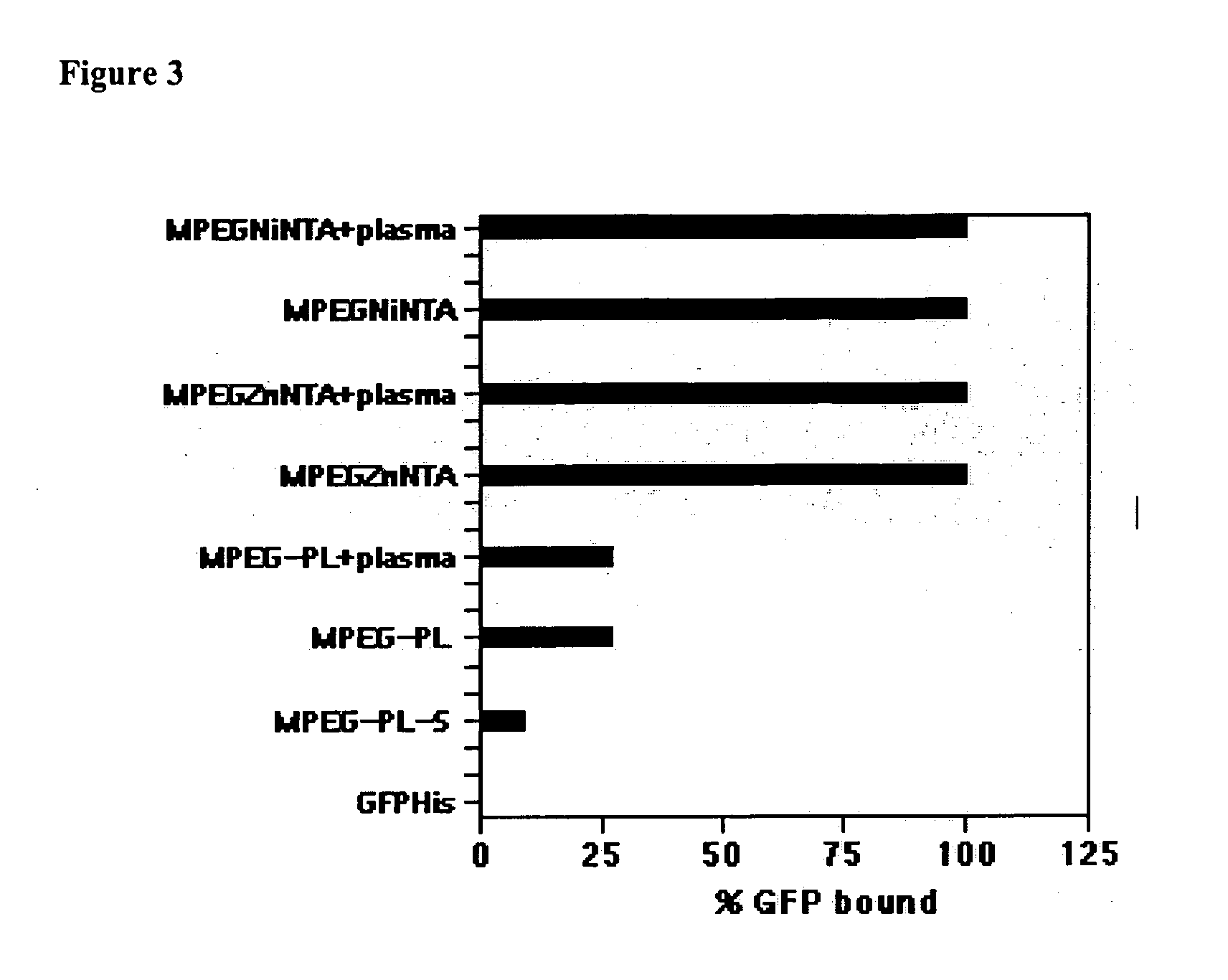Compositions for treatment with glucagon-like peptide, and methods of making and using the same
a technology of glucagon and peptide, which is applied in the field of compositions for treatment with glucagonlike peptide, and methods of making and using the same, can solve the problems of short biological half-lives of peptides and proteins with low molecular mass, loss of solubility, and associated disadvantages of quality of life and potential intravenous administration, so as to reduce undesirable immunogenicity, prolong the biological half-life of peptides, and reduce the glomerular filtration
- Summary
- Abstract
- Description
- Claims
- Application Information
AI Technical Summary
Benefits of technology
Problems solved by technology
Method used
Image
Examples
example 1
Synthesis of MPEG-PL.
[0287] Poly-L-lysine, hydrobromide (Sigma, mol mass. 48000, d.p.200), 1 g was dissolved in 175 ml of 0.1 M Na2CO3, pH 8.7. An aliquot of this solution was removed for NH2-groups determination by TNBS titration (final concentration of NH2-groups, 25 mM). Methoxy polyethylene glycol succinate (MPEGS9.6 g, 1.9 mmol) was dissolved in 25 ml of water, degassed, and N-hydroxy(sulfo)succinimide (500 mg, 2.3 mmol) was added, followed by 1 g, 5 mmol of EDC in 2 ml of water. This solution was incubated for 10 min at room temperature and added drop-wise to the solution of poly-l-lysine, final pH 7.7. The mixture was incubated for six hours. The product was purified using ultrafiltration on a cartridge with a cut-off of 100 kD (UFP-100 A / G Technology ) to remove unconjugated MPEGS and other reactants.
example 2
Synthesis of MPEG-PL-NTA
[0288] The product obtained as described in Example 1 (MPEGsuccinyl-poly-L-Lys (m.w. 340000) was succinylated using 10-fold molar excess of succinic anhydride over the concentration of TNBS-reactive free aminogroups in the co-polymer in 0.5 M sodium carbonate pH 8.0, 4 hours room temperature. Succinylated co-polymer (MPEGs-PL-Suc) was purified using dialysis against water.
[0289] 100 mg Lyophilized MPEGs-PL-Suc was dissolved in 2 ml water at 28 μmol succinate / ml, treated with 30 mg ethyl-diaminopropyl carbodiimide (EDC) in the presence of 20 mg Sulfo-NHS for 10 min at room temperature. A solution of activated MPEGs-PL-Suc was added to a solution of N_,N_-Bis(carboxymethyl)-L-lysine Hydrate (BCMLys) in 1 ml sodium bicarbonate, pH 8.7. Final pH 7.6 , incubated 24 hours at 4° C. The resultant product MPEGs-PL-Suc-NTA was purified using ultrafiltration on YM50 membrane (Amicon) by diluting to 100 ml and concentrating to 5 ml volume four times. A solution of MPEG...
example 3
Synthesis of MPEGs-PL-NiNTA
[0290] A solution of product MPEGs-PL-Suc-NTA was dialysed against 1 L of 10 mM Ni acetate / 20 mM citric acid, pH 6 for 24 hours at 4° C. and purified by dialysing against 2L water (2 changes). Binding of Ni was measured by spectrophotometry at 625 nm using Ni-citrate as a standard.
PUM
| Property | Measurement | Unit |
|---|---|---|
| molecular mass | aaaaa | aaaaa |
| molecular mass | aaaaa | aaaaa |
| molecular weight | aaaaa | aaaaa |
Abstract
Description
Claims
Application Information
 Login to View More
Login to View More - R&D
- Intellectual Property
- Life Sciences
- Materials
- Tech Scout
- Unparalleled Data Quality
- Higher Quality Content
- 60% Fewer Hallucinations
Browse by: Latest US Patents, China's latest patents, Technical Efficacy Thesaurus, Application Domain, Technology Topic, Popular Technical Reports.
© 2025 PatSnap. All rights reserved.Legal|Privacy policy|Modern Slavery Act Transparency Statement|Sitemap|About US| Contact US: help@patsnap.com



